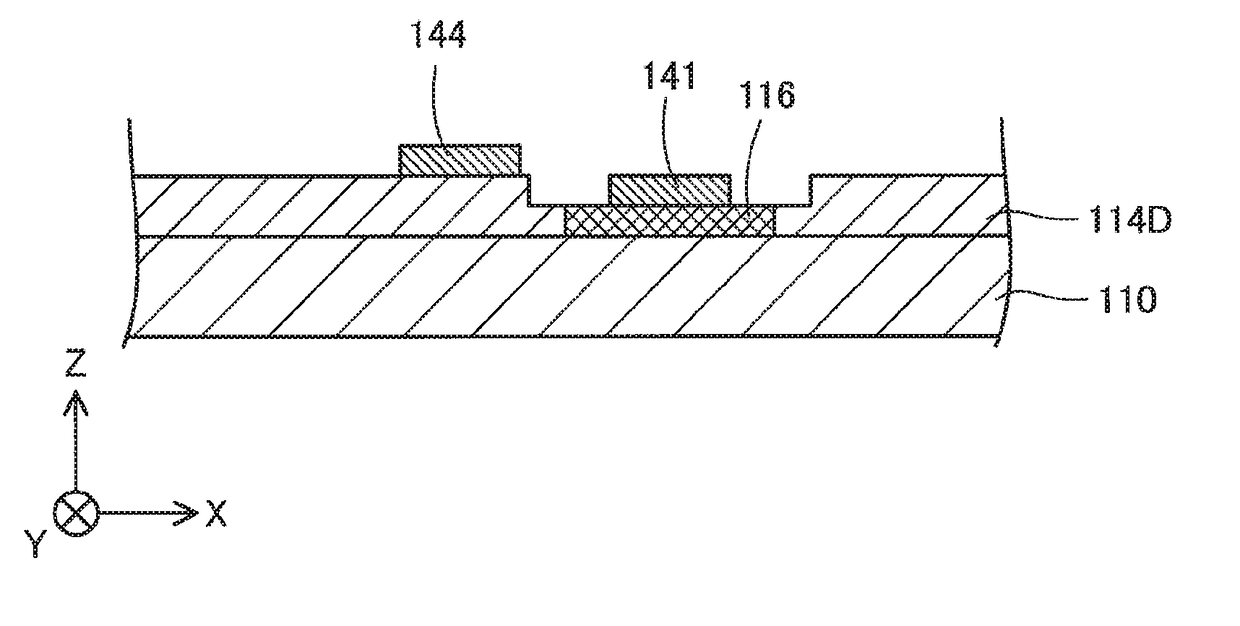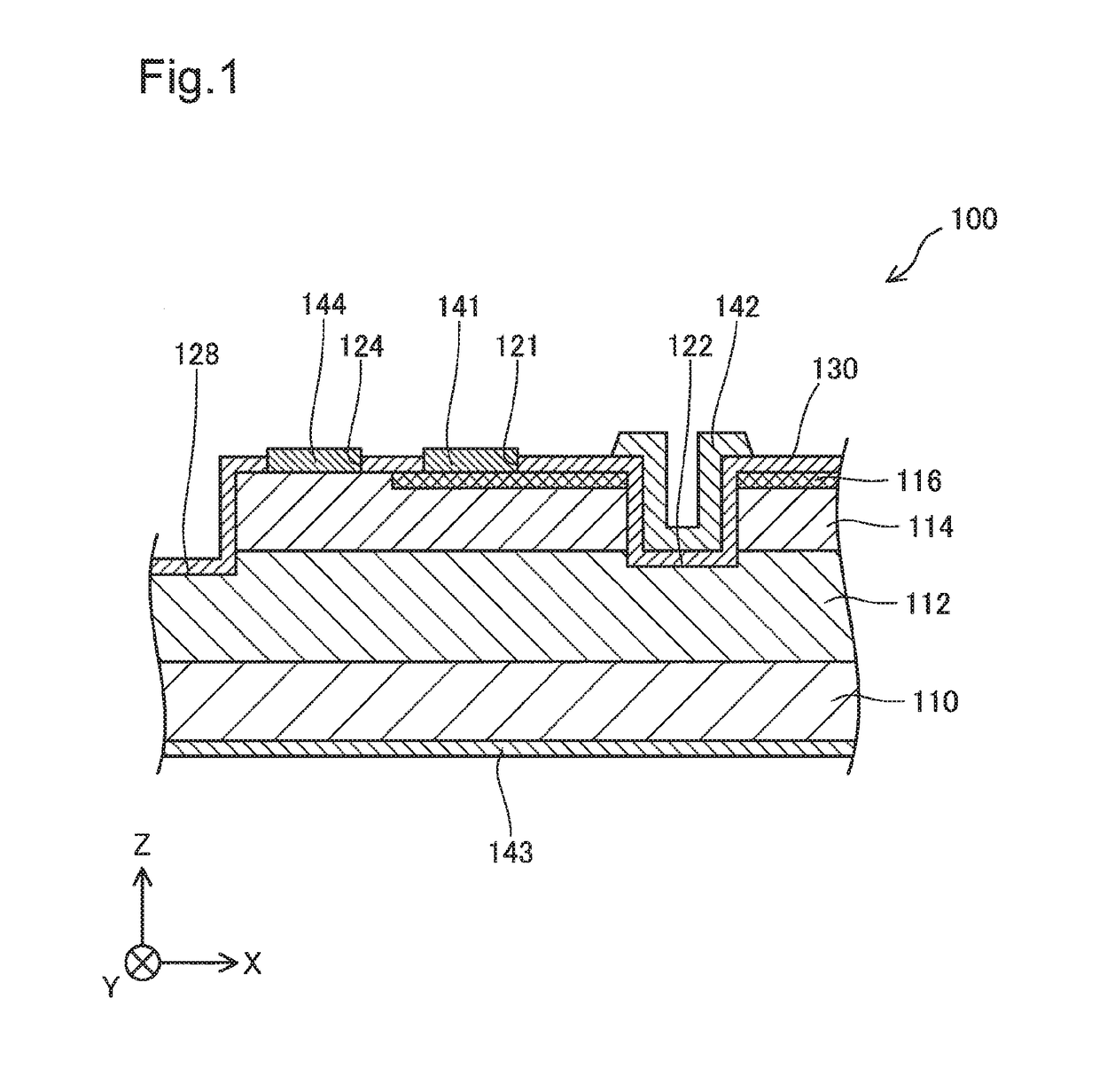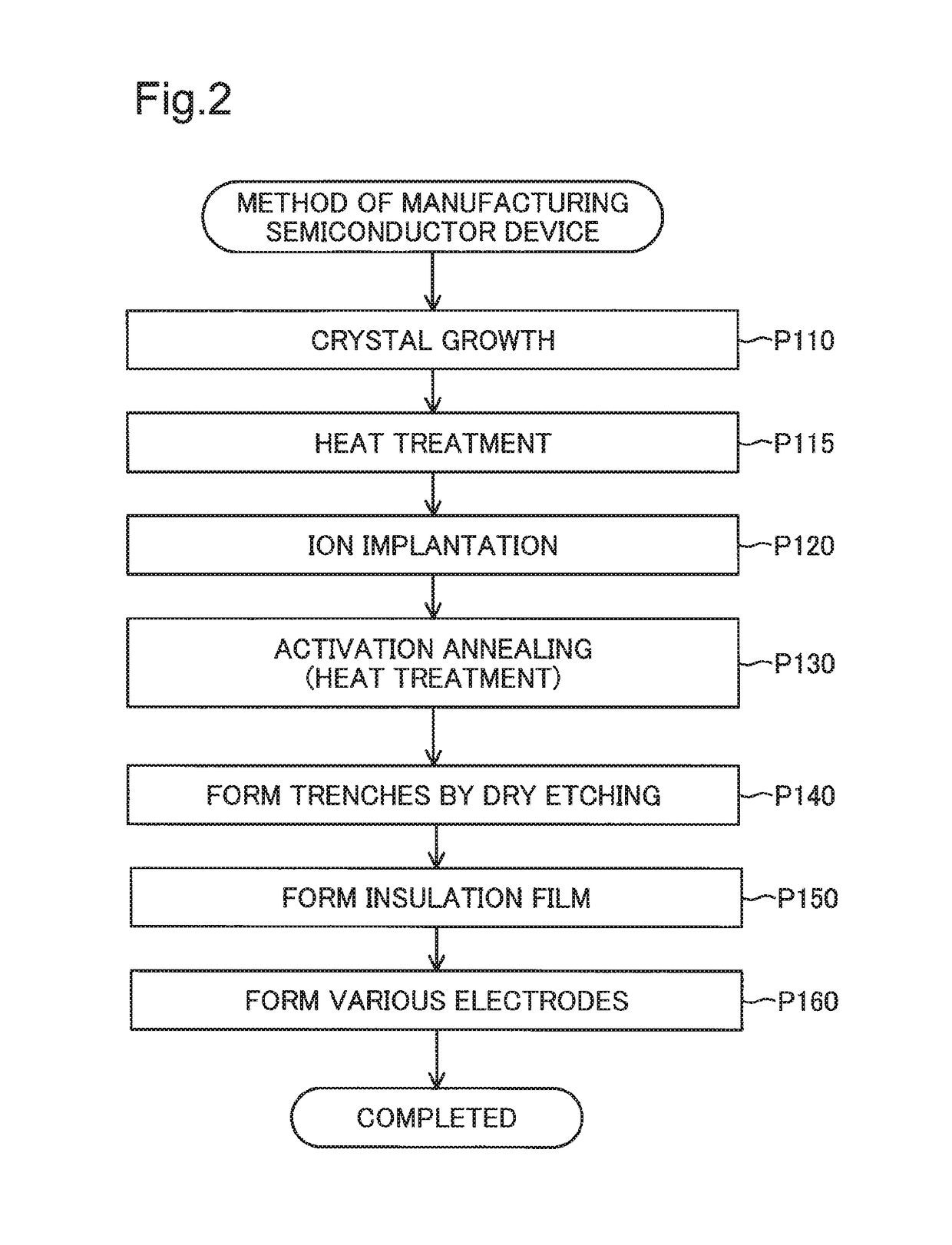Semiconductor device
a technology of semiconductors and devices, applied in the direction of semiconductor devices, basic electric elements, electrical equipment, etc., can solve problems such as complicated manufacturing processes, reduce the number of times of mask formation, reduce potential design errors, and reduce the complication of manufacturing processes
- Summary
- Abstract
- Description
- Claims
- Application Information
AI Technical Summary
Benefits of technology
Problems solved by technology
Method used
Image
Examples
first embodiment
A. First Embodiment
[0038]A-1. Structure of Semiconductor Device
[0039]FIG. 1 is a sectional view schematically illustrating the structure of a semiconductor device 100 according to a first embodiment. The semiconductor device 100 is a GaN-based semiconductor device formed by using gallium nitride (GaN). According to this embodiment, the semiconductor device 100 is a vertical trench MOSFET (metal-oxide-semiconductor field-effect transistor). According to this embodiment, the semiconductor device 100 is used for power control and is also called power device.
[0040]XYZ axes orthogonal to one another are illustrated in FIG. 1. Among the XYZ axes of FIG. 1, the X axis denotes a left-right axis on the sheet surface of FIG. 1. +X-axis direction denotes a rightward direction on the sheet surface, and −X-axis direction denotes a leftward direction on the sheet surface. Among the XYZ axes of FIG. 1, the Y axis denotes a front-back axis on the sheet surface of FIG. 1. +Y-axis direction denotes a...
second embodiment
B. Second Embodiment
[0113]FIG. 13 is a sectional view schematically illustrating the structure of a semiconductor device 100A according to a second embodiment. The semiconductor device 100A of the second embodiment differs from the semiconductor device 100 of the first embodiment by that the first electrode 141 and the second electrode 144 are provided as one identical electrode 141A, but is otherwise similar to the semiconductor device 100 of the first embodiment. The semiconductor device 100A includes the electrode 141A that provides the functions of the first electrode 141 and the second electrode 144 of the first embodiment and is formed by continuously connecting the first electrode 141 with the second electrode 144 of the first embodiment. This configuration allows for miniaturization of the semiconductor device 100A. The configuration of the first embodiment requires to take account of the critical dimensions of patterning using a photoresist, in order to prevent the first el...
third embodiment
C. Third Embodiment
[0114]FIG. 14 is a sectional view schematically illustrating the structure of a semiconductor device 100B according to a third embodiment. The semiconductor device 100B of the third embodiment differs from the semiconductor device 100 of the first embodiment by that a p-type semiconductor region 118 is provided between the p-type semiconductor region 114 and the second electrode 144, but is otherwise similar to the semiconductor device 100 of the first embodiment. According to this embodiment, the p-type semiconductor region 118 is provided as a layer having a higher concentration of magnesium (Mg) as the p-type impurity than that of the p-type semiconductor region 114. According to this embodiment, the concentration of the p-type impurity in the p-type semiconductor region decreases with an increase in distance from the surface of the p-type semiconductor region adjacent to and in contact with the second electrode 144. This configuration reduces the contact resis...
PUM
 Login to View More
Login to View More Abstract
Description
Claims
Application Information
 Login to View More
Login to View More - R&D
- Intellectual Property
- Life Sciences
- Materials
- Tech Scout
- Unparalleled Data Quality
- Higher Quality Content
- 60% Fewer Hallucinations
Browse by: Latest US Patents, China's latest patents, Technical Efficacy Thesaurus, Application Domain, Technology Topic, Popular Technical Reports.
© 2025 PatSnap. All rights reserved.Legal|Privacy policy|Modern Slavery Act Transparency Statement|Sitemap|About US| Contact US: help@patsnap.com



